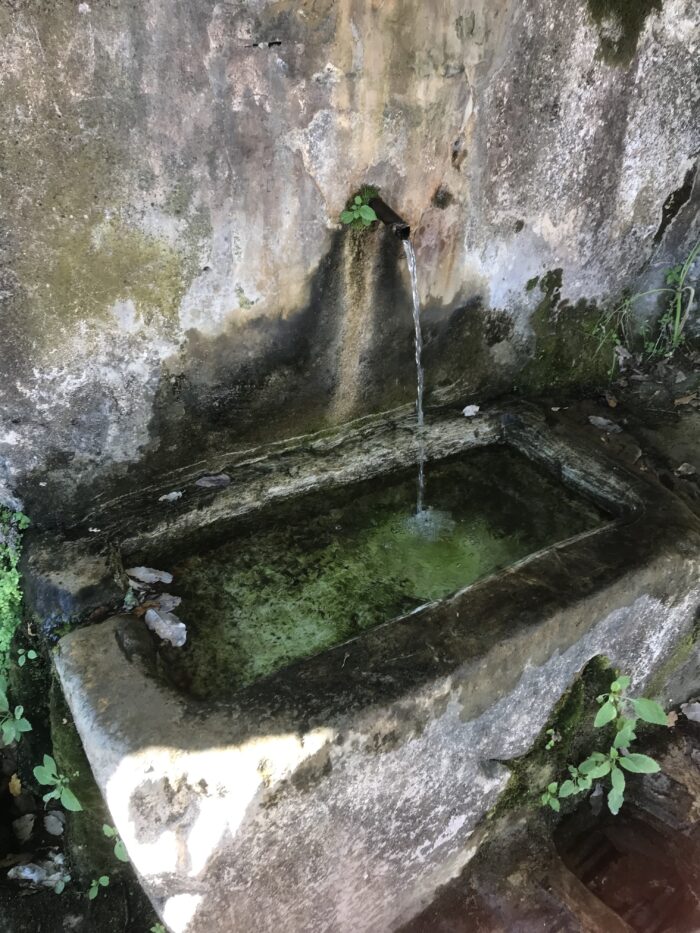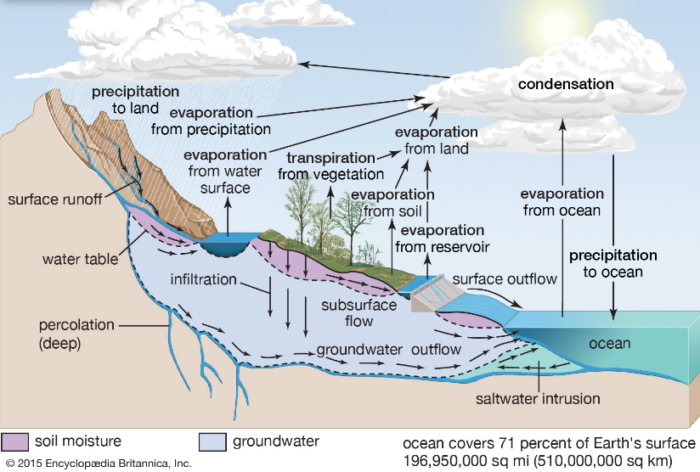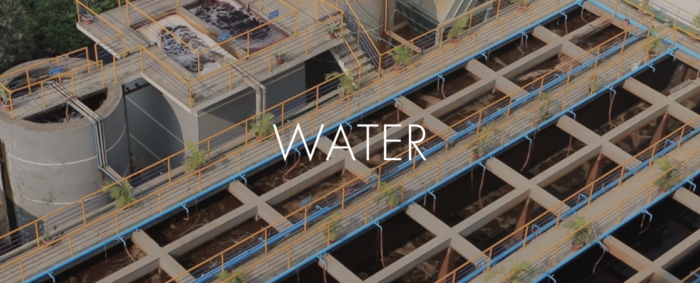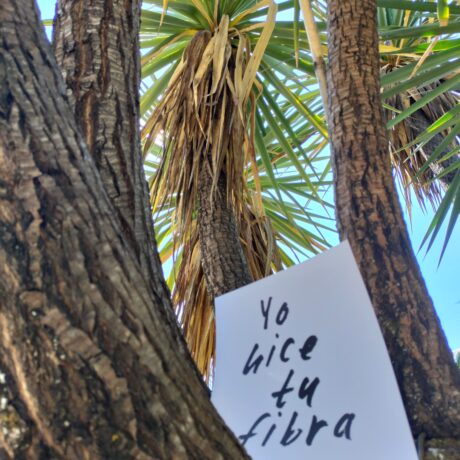Water Ways

When trying to define for each other ‘sustainable fashion’ or clothing made ‘sustainably’ I think that so often we do this from the wrong perspective, and that’s why it can feel so difficult, conflicting and even meaningless. Instead of trying to force ‘sustainability’ into the fashion industry, lets first describe sustainability itself, that is the sustainability of our planetary boundaries and then approach our fashion and clothing industry, and personal activity, from this vantage point.
If we take some time to adjust our mindsets and to expand our perspectives so that we can see as much of the whole system of Earth as possible, we can base our knowing in the facts of geologic interconnectedness, see everything as a whole and have a meaningful starting point.
This piece focuses on water, how can we understand it better and can we possibly become friends again with an element so taken for granted, so misunderstood and so contaminated by our ignorance and our greed.
“Why, then, does water-form the very basis of life in all life’s various manifestations? Because water embraces everything is in and all through everything; because it rises above the distinctions between plants and animals and human beings; because it is a universal element shared by all; itself undetermined, yet determining; because, like the primal mother it is, it supplies the stuff of life to everything living.” – Theodor Schwenk
Several years ago, someone outside of the fashion industry, (I wish I could remember who), brought my attention to a fascinating truth about water on Earth. The water on our planet is a constant mass (approximately 1.4 billion cubic km or 326 million cubic miles ) which has been here since it first appeared during the formation of Earth, probably around 4 billion years ago, and which has been in a constant cycle ever since. It’s called the Hydrosphere, which is the combined mass of water found, on, under and above the surface of a planet.
This includes all the water in the oceans, rivers, lakes, ice, atmosphere (water vapor) and of course in all living creatures, plants and also in the layers of crust and into the depths of the Earth’s core.
The most significant thing for me about this is that I now truly understand that all water is connected, it does not change into anything else, it does not disappear off the planet (well actually very very small amounts do escape the gravitational field but we wont get into that here!) and it is so absolutely omnipresent.
We probably learned about this at school right? And we’ve probably seen a diagram that shows us a version of our ‘Hydro – Cycle’, the way water moves so majestically through the filters of earth, air and ocean, but how often do we call up this image when we are planning a collection or planting a cotton crop or washing a synthetic garment?
The hydro-system offers us the most ancient and well preserved representation of circular ‘sustainability’ we could wish for. So how does our fashion system fit into the hydro- system, not how can we make water fit into a ‘sustainable’ version of fashion for next season.

The shift for me is in the way we think about water and then in changing the way we talk about it as well. When it comes to water it’s like we’ve handed over our personal and industrial responsibility, our understanding and our interest too. We (the global, commercial fashion industry) have become small minded, narrow and consumerist in our knowledge, descriptions and treatment of one of the most powerful and truly precious elements in our world, we think of it only as being owned and used. In particular the global north, take water so entirely for granted that we have lost sight of any meaningful relationship to our water sources, cycles and systems.
This apathy combined with the interests of profit, speed and volume are shattering individual and collective reverence for the crucial life giving force of water and the way that our personal and industrial activity relates to the grand hydro-cycle.
We habitually contaminate, directly and indirectly, with all accountability and responsibility pushed downwards through the value chain onto the heads of the suppliers, away from brand management and otherwise into the hands of possibly underfunded local water authorities, politicians and increasingly into the profit driven interests of big business. There is a need for a giant leap in proactive accountability and supportive effort at all levels.
There are dozens of well quoted facts and well researched data sets out there about water and the fashion industry, some of them are useful in describing our position, but many of us are also suffering from fact fatigue. Focusing only on detached data can lead us away from a holistic, complex understanding and leave us with isolated information than feels meaningless.
We read about ‘water use’ which can imply a linear process; take, use, discard, however water on our planet can never be linear so when we talk about use, perhaps its more meaningful to be specific and to give more accurate names to these processes and phases of the hydro-cycle.
“It takes 2720 litres of water to make a t-shirt. That’s how much we normally drink over a 2 and a half year period.”
Probably one of the most common stats we have all seen, an important one for sure and very useful but because we are so disconnected from what the actual processes that these 2720 litres apply to it’s quite possible that the average take away from this stat is a strong visual of a very wet t-shirt coupled with lots of clean drinking water that vanishes into thin air.
The reality is of course far more gritty, complex, circumstantial and of course includes the element of time (for example a quick calculation based on this same t-shirt being machine washed at low temp once a week for a year would also require an additional 2,262litres of water.)
So actually these 2700 litres are being extracted, diverted, applied, contaminated, reapplied, polluted and eventually released back into various phases of the natural system. This water is permanently in the hydro-cycle and potentially so too are all of the additives, bi products and contaminates. So yes the incredible properties of water are being harnessed to make a t-shirt but surely the emphasis should be on the likely affects on 2700 litres of water rather than the impression that it is fresh clean water simply being ‘used’ and then it’s mysteriously ‘gone’.
There are two types of water contamination ‘point source’ meaning it occurs at a specific point (and is potentially more easy to regulate) and then ‘diffuse pollution’ meaning it occurs during the onward journey of water after the initial pollution occurs (this is much harder to regulate).
As individuals and as industry decision makers being more accurate and interested in the journey of water and it’s critical role can help us to use the influence we may have to, decrease harmful chemical inputs, decrease excessive processing and to reshape the unhealthy relationship between clothing and water that has been created.
So how else can we look the problems in the face and affectively change at a personal and at an industry level?
My sister recently conducted a year long study, in collaboration with her local water authority and a local university professor, for the entire year she committed to only using 15 litres of water a day. (This is roughly 10% of the average daily domestic consumption in the UK and other regions with good access to domestic water) She lives in a rented flat in urban England.
I asked her how this impacted her relationship to laundry and her wardrobe in general. She said, “I had to be much more strategic about washing clothes. At first I tried only hand washing but it was too labour intensive and didn’t fit with my schedule (the project was aimed to find ways that didn’t impact the way I lived too much). With the help of Pete, the science professor, we measured the amount of water on my short cycle machine wash, which was about 43.5 litres on a 30 minute 30degree wash. So I saved up my laundry over 2 weeks and did my laundry every fortnight, knowing that, during those two weeks, I needed to set aside the water for this. It worked out fine, I got into a rhythm. I wore clothes for longer than before, up to 3 times before washing, it also made me think about the embedded water in clothing and garments. It made me very aware of how many clothes I had, so I also started to have a more capsule style of wardrobe and I didn’t buy as many clothes knowing it was another thing I’d have to wash!”
I also asked her what she learned about her local water systems which are such a mystery to most of us right? She told me that one of the most important thing she now knows is that all of her water was resourced from reservoirs, not from springs or bore holes, it’s captured by rain and then filtered. In fact there’s a lot of filtration which also means chemical processing. She also spoke to Thames City Water (they are not her local authority) who told her that they are struggling with population growth, not because of lack of water, but because of old infrastructure. There are lots of areas they simply now can’t access to maintain so there is a lot of leakage in pipes that they cannot correct. Because of this convergent potential crisis in London they are encouraging people to reduce consumption, using simple methods such as free water butts for collection in the summer and other free appliances for domestic use that will encourage lower usage. She told me she was also encouraged by this conversation with a co-orporate interest, often thought of as the enemy, being so pro active around reducing water consumption.
For this piece I wanted to talk to people about their direct experiences and local wisdom, so I also reached out to someone from a vastly different perspective. Shafiq Hassan is the Managing Director of EchoTex, a LEED and The Higg Index Platinum certified garment factory in Gazipur, Bangladesh, which is 30 km from the capital city, Dhaka.
EchoTex employs over 11,000 people and Shafiq is hugely passionate about sustainability, setting an example by responding to real local water pressures and proactively implementing solutions at his facility.
He tells me plainly that “Ground water is the life blood of the capital city that has around 20m inhabitants. Textile industries in the region are pumping the ground water out at an estimated rate of 1500b litres a year according to a World Bank report.As the water table shrinks, saline water can creep into the ground water reservoirs and another huge issue is the potential for subsidence”.
The Echotex factory roofs harvest rain water and together with any non toxic water from their effluent treatment plant this provides for all basic sanitation at the facility.
They have worked with PaCT Partnership for Cleaner Textile a program carried out by IFC to reduce waste and increase efficiency.Using state of the art dyeing and finishing machinery which reduces water use significantly, to about fifty percent of Bangladesh industry average. “Next we are looking at investing into zero discharge technologies and how to recycle our effluent to be commissioned in 2020, this could reduce using ground water by another fifty to eighty percent.” says Shafiq. “We are also looking at salt free dyeing that would reduce water usage and contamination even further”
I encourage you all to ask water questions across your value chains and in particular to your suppliers and to learn from them. You may find that, due to proximity, they have already outstripped the efforts of designers and CSR or brand managers when it comes to understanding and becoming better stewards of water in the value chain.

I think it’s so fundamental to take a genuine interest in understanding the context of the problems, and to discover the local nuance and detail that relates directly to us, as individuals but also as industry decision makers, as we are essentially making water decisions on behalf of many others.
Let’s get to know the macro and the micro implications so together, we can better adapt to our planets hydro cycle, lets talk about ‘impacts’, ‘usage’, ‘contamination’ and preservation with a refreshed context, within the majesty of the ancient hydrosphere.
Sustainable Development Goal 6.6 – “By 2020, protect and restore water-related ecosystems, including mountains, forests, wetlands, rivers, aquifers and lakes.”
Some water tips from my sister Chloe:
- Be more aware of water as an element. When you come into contact with it, observe it in detail, see how it adapts to and interacts with your body and other elements around it.
- Campaign against any industry that will potentially contaminate water sources permanently.
- Support first nation peoples who are facing disruption and threats to their water sources.
- Eat less meat and fish or even stop eating meat and fish, these industries are causing all kinds of water contamination.
- Think more about ’embedded water’ when you shop, for example in clothing, instead buy second hand whenever you can.








